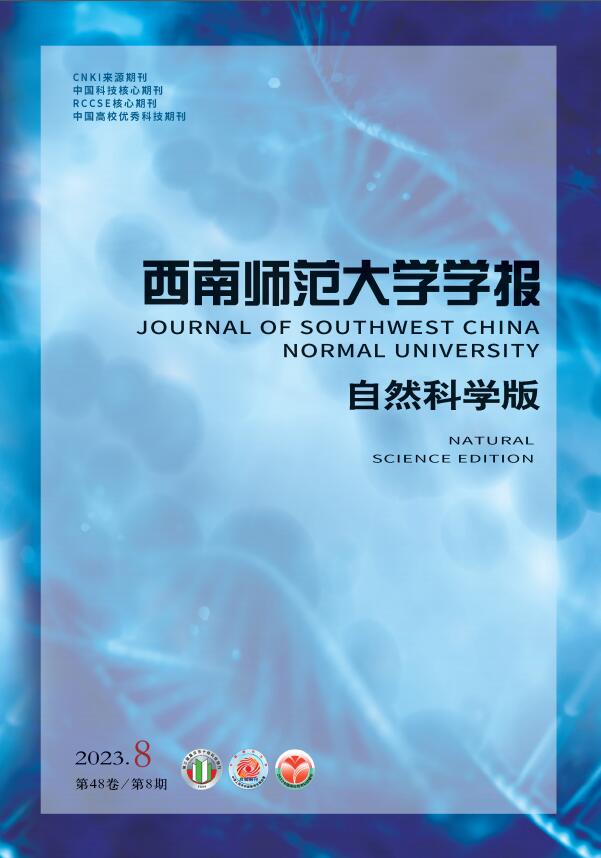-
连接函数Copula[1]可以将多个边缘分布函数结合成一个联合分布函数,其中边缘分布是随机变量的分布,因此可以借助连接函数来刻画变量之间的相依关系. 关于Copula函数的性质及其应用的更多研究,见文献[2-4].
Copula函数族中有种类众多的Copula函数,包括阿基米德Copula、椭圆Copula、极值Copula等. 阿基米德Copula是一种性质优良的Copula函数,具有构造简单、计算容易且便于应用的优点.
设ψ:[0, 1]→[0, ∞]为连续的、严格单调递减的凸函数,满足ψ(1)=0. 且
则称Copula
为阿基米德Copula且函数ψ是C的生成元. 当ψ(0)=∞时,则称生成元ψ和其对应的阿基米德Copula是严格的[5].
当阿基米德Copula的生成元为
$ \psi(t)=\frac{1}{\alpha}\left(t^{-\alpha}-1\right)$ ,α>0时,由ψ(t)生成的Copula为Clayton Copula[6],其表达形式为利用Copula可以解决许多重要问题,其中就有极值问题. 极值理论需要估计比以往所观测到的现象更极端的事件的发生概率,因此引发了对条件随机向量相依结构的研究. 文献[7]提出了Copula C在水平u的极尾相依Copula的概念.
对于一个Copula C并且u∈(0,1)使得C(u,u)>0,令
关于C在水平u的极尾相依Copula为
Fu是连续的分布函数,
$F_u(x)=\mathrm{P}[X \leqslant x \mid X \leqslant u, Y \leqslant u] $ ,并且由(5)式可得${C_u}(x, y) = P[X \le \left. {F_u^{ - 1}(x), Y \le F_u^{ - 1}(y)\mid X \le u, Y \le u} \right] $ ,即对于较小的u值,Cu用Copula C描述了两个随机变量尾部的条件依赖结构,关于极尾相依Copula的研究见文献[8]和文献[9].文献[8]讨论了当阿基米德Copula的生成元
$\psi \in R V_{-\alpha}\left(0^{+}\right) $ ,α>0,即生成元ψ在一阶正规变换的条件下,$ u \rightarrow 0^{+}$ 时,极尾相依Copula Cu收敛到Clayton Copula.文献[10-13]讨论了正规变换函数和二阶正规变换函数,用以研究某个估计量的收敛速度,本文讨论生成元ψ在原点处满足二阶正规变换的条件下,即
$ \psi \in 2 R V_{-\alpha, \beta}\left(0^{+}\right)$ ,其中辅助函数A(t)是定号的(见文献[14]),得到极尾相依Copula Cu的渐近展开.
HTML
-
定理1 假设Copula C是严格的阿基米德Copula,其生成元ψ可微并满足(6)式,即
$ \psi \in 2R{V_{ - \alpha , \beta }}\left( {{0^ + }} \right)$ ,其中0 < α < ∞,β>0,辅助函数为A(t),则对任意0≤x,y≤1,$u \rightarrow 0^{+} $ 时,有其中
$ B(u) \sim \frac{1}{\alpha \beta}\left(A \circ \psi^{-1}\left(2\left(x^{-\alpha}+y^{-\alpha}-1\right) \psi(u)\right)-A \circ \psi^{-1}(2 \psi(u))\right)$ .证 对于生成元为ψ的阿基米德Copula C,由文献[7]命题3.2知
且根据(2),(5)和(8)式,有
令k=ψ-1(2ψ(u)),那么
由
$\psi \in 2 R V_{-\alpha, \beta}\left(0^{+}\right), 0<\alpha<\infty, \beta>0 $ ,辅助函数为A(t)可得由文献[14]命题2.7(i)得,逆函数
$ \psi^{-1} \in 2 R V_{-\frac{1}{\alpha}, -\frac{\beta}{\alpha}}$ ,且辅助函数为$ B(t) = - {\alpha ^{ - 2}}A \circ {\psi ^{ - 1}}(t)$ ,即ψ-1(t)有下列展开式成立,其中c≠0(见文献[15]引理2.2). 当
$u \rightarrow 0^{+} $ 时,$ k \rightarrow 0^{+}, \psi(k) \rightarrow \infty$ ,由(11)式知,由(10)式得,当
$k \rightarrow 0^{+} \text {时, } L_{x, y, \alpha}=\frac{\psi(k x)}{\psi(k)}+\frac{\psi(k y)}{\psi(k)}-1=\left(x^{-\alpha}+y^{-\alpha}-1\right)(1+o(A(k))) $ ,则由(11)式得将(12)和(13)式代入(9)式得,当
$ u \rightarrow 0^{+}, k=\psi^{-1}(2 \psi(u)) \rightarrow 0^{+}$ 时,其中,令
则有
当
$ u \rightarrow 0^{+}$ 时定理证毕.
-
例1 给定阿基米德Copula C的生成元
$ \psi(t)=\left(t^{-\frac{1}{\theta}}-1\right)^\theta, \alpha=1, \beta=\frac{1}{\theta}$ ,可以得到$ \psi \in 2 R V_{-1, \frac{1}{\theta}}\left(0^{+}\right)$ ,辅助函数$A(t)=\frac{t^{\frac{1}{\theta}}}{t^{\frac{1}{\theta}}-1}, \psi^{-1}(t)=\left(t^{\frac{1}{\theta}}+1\right)^{-\theta}A(t)=\frac{t^{\frac{1}{\theta}}}{t^{\frac{1}{\theta}}-1}, \psi^{-1}(t)=\left(t^{\frac{1}{\theta}}+1\right)^{-\theta} $ .将ψ和ψ-1的具体表达式代入(14)式,令
则有
当
$ u \rightarrow 0^{+}$ 时,由泰勒展开式得并且
令
$ B(u)=\theta\left(\frac{\frac{u^{\frac{1}{\theta}}}{2^{\frac{1}{\theta}}\left(1-u^{\frac{1}{\theta}}\right)}-\frac{u^{\frac{1}{\theta}}}{D_u(x, y)}}{1+\frac{u^{\frac{1}{\theta}}}{D_u(x, y)}}\right) \text {, 当 } u \rightarrow 0^{+} \text {时 }, D_u(x, y) \rightarrow 2^{\frac{1}{\theta}}\left(x^{-1}+y^{-1}-1\right)^{\frac{1}{\theta}}$ ,则有且
与定理的结论一致.
例2 给定阿基米德Copula C的生成元
$\psi(t)=\left(\frac{1}{t}-1\right)^\theta, \alpha=\theta, \beta=1 $ ,可以得到$\psi \in 2 R V_{-\theta, 1}\left(0^{+}\right) $ ,辅助函数$A(t)=\frac{\theta t}{t-1}, \psi^{-1}(t)=\left(t^{\frac{1}{\theta}}+1\right)^{-1} $ .令
将ψ和ψ-1的具体表达式代入(15)式得
当
$u \rightarrow 0^{+} $ 时,由泰勒展开式得,并且,
令
当
$ u \rightarrow 0^{+} \text {时, } D(u) \rightarrow 2^{\frac{1}{\theta}}\left(x^{-\theta}+y^{-\theta}-1\right)^{\frac{1}{\theta}}$ ,则有且
与定理的结论一致.






 DownLoad:
DownLoad: